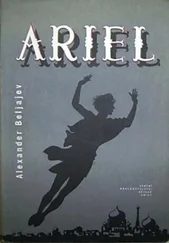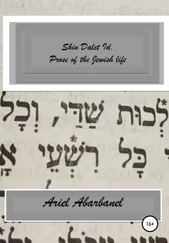Ariel Toaff - Blood Passover
Здесь есть возможность читать онлайн «Ariel Toaff - Blood Passover» весь текст электронной книги совершенно бесплатно (целиком полную версию без сокращений). В некоторых случаях можно слушать аудио, скачать через торрент в формате fb2 и присутствует краткое содержание. Жанр: Религиоведение, на английском языке. Описание произведения, (предисловие) а так же отзывы посетителей доступны на портале библиотеки ЛибКат.
- Название:Blood Passover
- Автор:
- Жанр:
- Год:неизвестен
- ISBN:нет данных
- Рейтинг книги:3 / 5. Голосов: 1
-
Избранное:Добавить в избранное
- Отзывы:
-
Ваша оценка:
- 60
- 1
- 2
- 3
- 4
- 5
Blood Passover: краткое содержание, описание и аннотация
Предлагаем к чтению аннотацию, описание, краткое содержание или предисловие (зависит от того, что написал сам автор книги «Blood Passover»). Если вы не нашли необходимую информацию о книге — напишите в комментариях, мы постараемся отыскать её.
Blood Passover — читать онлайн бесплатно полную книгу (весь текст) целиком
Ниже представлен текст книги, разбитый по страницам. Система сохранения места последней прочитанной страницы, позволяет с удобством читать онлайн бесплатно книгу «Blood Passover», без необходимости каждый раз заново искать на чём Вы остановились. Поставьте закладку, и сможете в любой момент перейти на страницу, на которой закончили чтение.
Интервал:
Закладка:
p. 202]
who considered themselves to have, reciprocally outstanding accounts to settle. In the early 16th century, the rabbi Jechiel Trabot lamented the widespread wickedness of taking advantage of the ceremonies of the synagogue to engage in furious verbal disputes, which sometimes concluded with recourse to fisticuffs. These violent disputes, accompanied by insults and curses, usually occurred "with the Seder open", that is, when the rolls of the Law were exhibited and placed, open, upon the almemor for reading [630] In this regard, see Y. Boksenboim in Azriel Diena, Sheelot w-teshuvot. Responsa, by Y. Boksenboim, Tel Aviv, 1977, voI. I, p. 12 note 5, and, more recently, R. Weinstein, Marriage Rituals Italian Style. A Historical Anthropological Perspective on Early Italian Jews , Leyden, 2004, pp. 225-226.
.
The [Ahkenazi] Jews possessed a vast range and picturesque catalogue of anathemas against Jesus and the Christians, generally reinforced by appropriate gestures of mockery and contempt, often taking the form of obscene and scurrilous jests. Offensive and obscene gestures, ritualized and sanctified by the holy temple in which they were performed, constituted an effective instrument of communication, directed at their own community, to request and obtain the anticipated and complacent approval, or at least silent complicity. The insults and scurrilous gestures most frequently resorted to [by Jews] during the Middle Ages, right down to the end of the early modern age, include the rhythmic stamping of the feet to create an ear-splitting din intended to drown out any mention of the memory or even the very voice of the adversary; the act of sticking out the tongue and/or making faces, the of spitting in the face, the act of uncovering the buttocks and the gesture of "doing the fig". The latter, considered a particularly insulting gesture of contempt, was performed by displaying the hands with the thumb tightly inserted between the index and middle fingers, a symbolic allusion to the female genital organ during the act of copulation [631] In this regard, see P. Burke, Insulti e bestemmie , in Id., Scene di vita quotidiana nell'Italia moderna , Bari, 1988, pp. 118-138; Id., L'art de l'insulte en Italie au XVIe et XVIIe siècle , in J. Delumeau, Injures et blasphème s, Paris, 1989, pp. 249-261.
.
When, in the weekly readings of the Pentateuch, they reached the fragment relating to the Amalek (Deut. 25: 17-19), considered Israel’s implacable enemy and persecutor par excellence throughout history, the participants in the liturgy of the synagogue stamped their feet violently, accompanied by a deafening noise to drown out any mention of their name. This often occurred during the recitation of the meghillah , the roll of Esther, during the feast of Purim , at every mention of Haman, Assuerus’s cruel minister, inventor of the plan to exterminate the Jewish people in the land of Persia. The hubbub was also renewed when at any mention of Zeresh , Haman’s faithful consort, and his numerous children, in the liturgical text. In this connection, Leon da Modena recalled that "some people, at the mention of Haman’s name, beat on the benches of the synagogue as a sign that they were cursing him", a custom the existence of which was confirmed by the convert Giulio Morosini, who stated that, at Venice, the Jews pounded violently on the flat surfaces of their wooden benches in the synagogue as a sign of execration of
p. 203]
the hated enemy, "pound on the benches of the synagogue with all their strength as a sign of excommunication, saying in a loud voice, ‘May his name be blotted out’, and ‘May the name of the impious putrefy’” [632] Leon da Modena, Historia de' riti hebraici , Venice, Gio. Calleoni, 1638, pp. 80-81; Giulio Morosini, Derekh Emunah. Via della fede mostrata agli ebrei , Roma, Propaganda Fide, 1683, p. 836. On gestural language in Jewish liturgy, see, recently, U. Ehrlich, The Non-Verbal Language of Jewish Prayer , Jerusalem, 1999 (in Hebrew).
.
One of the most widespread prayers of the Jewish ritualistic formulary was doubtlessly the one beginning with the words 'Alenu leshabbeach ("We must praise the Lord"), which was to be recited several times a day and during feasts and solemnities. This text, sometimes called a sort of “Credo of Judaism”, not surprisingly contained expressions particularly critical of Jesus and Christianity. Ecclesiastical censure therefore dealt severely with this prayer, erasing all polemical mention of the faith in Christ from the manuscripts and prohibiting any printing of the full text. Yet, nonetheless, during the persecutions of the Middle Ages, it was precisely this prayer which was most frequently shouted at their persecutors by Jews when the time case to sacrifice their lives to God.
In the tradition of the German Jews, when the phrase "So that they (the Christians) may prostrate themselves and turn their prayers to vanity and nullity, to a God which is not the Savior" it was the custom to perform gestures of reproof and contempt, such as stamping the feet, shaking the head or jumping up and down on the ground [633] On the expressions and anti-Christian meanings of the hymn 'Alenu le-shabbeach , see, most recently, I.J. Yuval’s exhaustive treatment in "Two Nations in Your Womb". Perceptions of Jews and Christians , Tel Aviv, 2000, pp. 206-216 (in Hebrew).
. Giulio Morosini reported that, even in his time, when the Jews of Venice recited the liturgical hymn 'Alenu le-shabbeacuh , which he described as "contumelious against Christ and Christians [...] some attest that, when saying these words, they are accustomed to show abomination by spitting" [634] Morosini, Derekh Emunah. Via della fede mostrata agli ebrei , cit., pp. 277 -278.
. Insulting and scurrilous gestures and obscene acts, even, and most particularly, if performed within the holy confines of the synagogue, lost their negative connotations and served to underline and stress their passionate hatred and implacable contempt.
The Sabbath right after little Simon’s murder, when the child’s body was placed on the almemor , the Jews of Trent, gathered in the synagogue, abandoned themselves to excessive gestures absolutely without inhibition or restraint. According to the deposition of Angelo da Verona’s servant, Lazzaro, Samuele da Nuremberg, after concluding his fiery anti-Christian sermon against Jesus and His Mother, rushed up to the almemor , and, after “doing the fig”, slapped the boy in the face and spat on him. Not to be outdone, Angelo de Verona imitated these outrageous gestures, spitting and slapping the corpse, while Mosè "the Old Man" of Würzburg “did the fig”, mockingly showing his teeth, while Maestro Tobias allowed himself to be carried away in the performance of other acts of violence, with no shortage of slapping and spitting.
p. 204]
This scandalous spectacle was crowned by the other participants, led by Isacco, Angelo’s cook, and Mosè da Bamberg, the traveler, Lazzaro and Israel Wolfgang, the painter, and Israel, Samuele’s son, who, in addition to “doing the fig” like the others, stuck out his tongue and made faces. For their part, Joav da Ansbach, Maestro Tobias’s scullery boy, had no hesitation in performing obscene gestures, and, coarsely raising his caftan, displayed his buttocks [and genitals] shamelessly, a blasphemous act sometimes reserved solely for the passing of holy processions [635] "Samuel stans apud Almemor coepit facere ficas in faciem pueri et illud colaphis caedere et in faciem expuere. Moyses antiquus similiter faciebat ficas, quas dum sic faceret, ostendebat dentes, irridendo et Angelus expuendo in faciem pueri, illud colaphis caedebat. Tobias cum manu sinistra coepit capillos pueri et cum caput eiusdem pueri quateret super Almemor , tenendo capillos per manum cum alia manu pluries colaphizavit faciem pueri, in illamque expuit. Et Israel, filius Samuelis, tenendo os apertum, emittebat linguam et fecit ficas et Ioff, elevatis pannis, ostendit posteriora et pudibunda [displayed his buttocks and genitals], et Isaac, coquus Angeli, similiter fecit ficas et colaphis cecidit puerum. Et Moyses forensis fecit ficas, et Israel pietor similiter fecit ficas et similiter omnes alii Judaei ibi adstantes fecerunt aliquos actus illusorios [...] et Lazarus fecit ficas et semel cum manu aperto percussit faciem pueri et per capillos cepit puerum et eius caput quassavit". [Approximately: “Samuele, standing near the altar, started to ‘do the fig’ in the boy’s face and then he started to strike him and spit in his face. Moses the Old Man also ‘did the fig’, and, while he was doing it, he showed his teeth, grimacing, and Angelo spat in the boy’s face, then started striking him. Tobias, with his left hand, held the boy by the hair, holding his hair in his left hand, and with the other hand he started to strike the boy in the face, on the altar, over and over again, and to spit in his face. And Israel, Samuele’s son, opened his mouth, stuck out his tongue, ‘did the fig’ and Joff, raising his hem, displayed his buttocks and genitals [at least, if we assume that “pudibunda” = “filled with shame”, feminine nominative or ablative singular, is an obvious translation error for “pudenda” = “genitals”, neuter accusative plural; otherwise the sentence makes no sense, either grammatically or in context], and Isacco, Angelo’s cook, also ‘did the fig’ and struck the boy. And Moses did the fig in front of everybody and Israel piously did the same, and so did all the other Jews who were there performed acts of mockery […] and Lazarus ‘did the fig’ and struck the boy in the face and held the boy by the hair and shook his head violently”] Deposition of Lazzaro da Serravalle dated 20 November 1475 (cfr. [Benedetto Bonelli], Dissertazione apologetica sul martirio del beato Simone da Trento nell'anno MCCCCLXXV dagli ebrei ucciso , Trent, Gianbattista Parone, 1747, p. 119). Peter Burke ( Insulti e bestemmie , cit., p. 127) maintains that the public exhibition of the private parts was a classical gesture of contempt during the passage of Christ in a procession.
. Joav himself, in his confession, added that he had bitten the child's ear in an attempt to imitate or outdo Samuele da Nurmberg [636] "Quo puero sic stante, Samuel cum dentibus momordit aurem dicti corporis et idem Joff cepit aurem praedicti corporis illam stringendo cum dentibus" [Approximately: “The boy being on the altar, Samuele bit the corpse on the ear with his teeth and Joff did the same, fastening his teeth tightly”] (cfr. [Bonelli], Dissertazione apologetica , cit., p. 119).
. Anna da Montagana, the latter’s daughter-in-law, confirmed that she had indeed been present at this unedifying scene [637] "Die sequenti post festum Paschae (Anna) vidit corpus illius extensum super Almemor e et vidit in Synagoga omnes infrascriptos [...] qui colaphis caeciderunt dictum puerum" [“The day after Easter (Anna) saw the body lying on the altar and saw all the above mentioned persons in the synagogue [...] who began to beat the above mentioned boy”] (cfr. [Bonelli], Dissertazione apologetica , cit., p. 121).
.
Интервал:
Закладка:
Похожие книги на «Blood Passover»
Представляем Вашему вниманию похожие книги на «Blood Passover» списком для выбора. Мы отобрали схожую по названию и смыслу литературу в надежде предоставить читателям больше вариантов отыскать новые, интересные, ещё непрочитанные произведения.
Обсуждение, отзывы о книге «Blood Passover» и просто собственные мнения читателей. Оставьте ваши комментарии, напишите, что Вы думаете о произведении, его смысле или главных героях. Укажите что конкретно понравилось, а что нет, и почему Вы так считаете.












